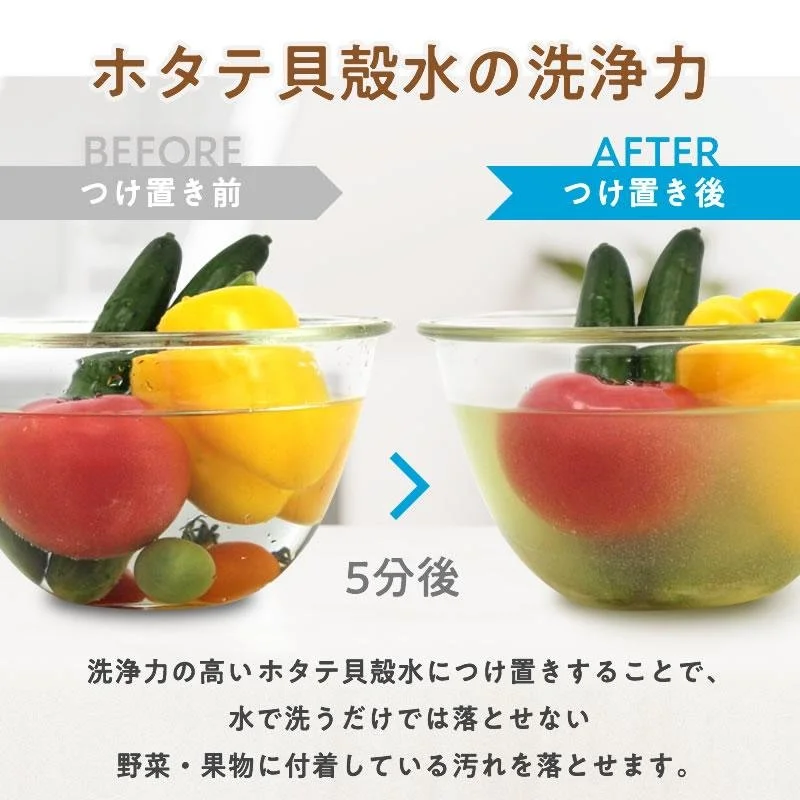The Importance of Washing Fruits & Veggies (+ What I Use)
We all want to give our families the healthiest, freshest meals possible - especially when it comes to feeding little ones. But even the most beautiful fruits and vegetables can carry invisible dirt, pesticides, and bacteria. That’s why washing your produce properly is one of the simplest, most powerful steps you can take to protect your family’s health.
Why Washing Matters
Fruits and vegetables travel a long way before they reach your kitchen — from farms to trucks to supermarket shelves. Along that journey, they can pick up:
Pesticide residues
Dirt and dust
Bacteria and microorganisms
Wax coatings or preservatives
For toddlers, whose immune systems are still developing, these residues can pose a bigger risk. Regular washing removes most surface contaminants, helping reduce your child’s exposure to potentially harmful substances.
The Method I Use: Hokkaido Scallop Shell Powder
Many people use baking soda or vinegar to clean produce, but I personally love using scallop shell powder - a natural, mineral-based cleanser that’s both safe and effective. It’s the preferred washing method in most Japanese households.
I typically buy my scallop shell powder from Japan (Amazon, local supermarkets, or drug stores) whenever I visit, or my mom helps me bring it back on one of her frequent visits. In Hong Kong, you can purchase it from HKTVMall, albeit at a slightly higher price point. Search on Amazon Japan with the phrase: ホタテ貝殻パウダー.
How It Works
Scallop shell powder is made by heating scallop shells at extremely high temperatures (around 1000°C) until they become a fine, alkaline powder rich in calcium oxide. When dissolved in water, this powder:
Neutralizes bacteria and pesticides
Breaks down wax and dirt
Deodorizes without leaving residue
How to Use It
Fill a bowl with clean water.
Add about 1 teaspoon of scallop shell powder per liter of water.
Stir to dissolve and soak fruits or veggies for 2–5 minutes.
Rinse thoroughly with water and pat dry.
You’ll often see the water turn cloudy, oily, or yellowish - that’s the residue being lifted away!
The “Dirty Dozen” (Plus One): Fruits & Veggies You Should Always Wash Well
Each year, the Environmental Working Group (EWG) releases a list of the produce most likely to contain pesticide residues even after washing. Here’s the 2024 “Dirty Dozen” list, plus one more I personally include.
Strawberries
Spinach
Kale, Collard & Mustard Greens
Grapes
Peaches
Pears
Nectarines
Apples
Bell Peppers
Cherries
Blueberries
Green Beans
Cherry Tomatoes (my personal addition)
Whenever I put cherry tomatoes (even organic ones) in scallop powder solution, the water turns the murkiest and ickiest out of all the fruits and vegetables I soak! Adding this in because toddlers tend to eat tomatoes whole, with skin and all.
Why I Avoid Veggie Wash Sprays
While store-bought veggie wash sprays might seem convenient, many contain synthetic chemicals, surfactants, or preservatives that can cling to porous produce surfaces.
Some products even include hypochlorous acid or chlorine compounds, which may not be harmful in trace amounts but aren’t something I want near my toddler’s meals every day. Long-term exposure to chemical residues has been linked in studies to potential health issues, so I choose to stick with natural options.
If You Choose Veggie Wash Sprays
Check the ingredient list: look out for words like “surfactant”, “detergent”, “chlorine”, “hypochlorous”, “antimicrobial”.
Check if the product is EWG-verified, USDA organic, or similar.
Prefer products with full ingredient transparency; if the brand cannot show what’s inside, treat with caution.
If in doubt, rinse under running water and consider a natural soak rather than using a spray.


